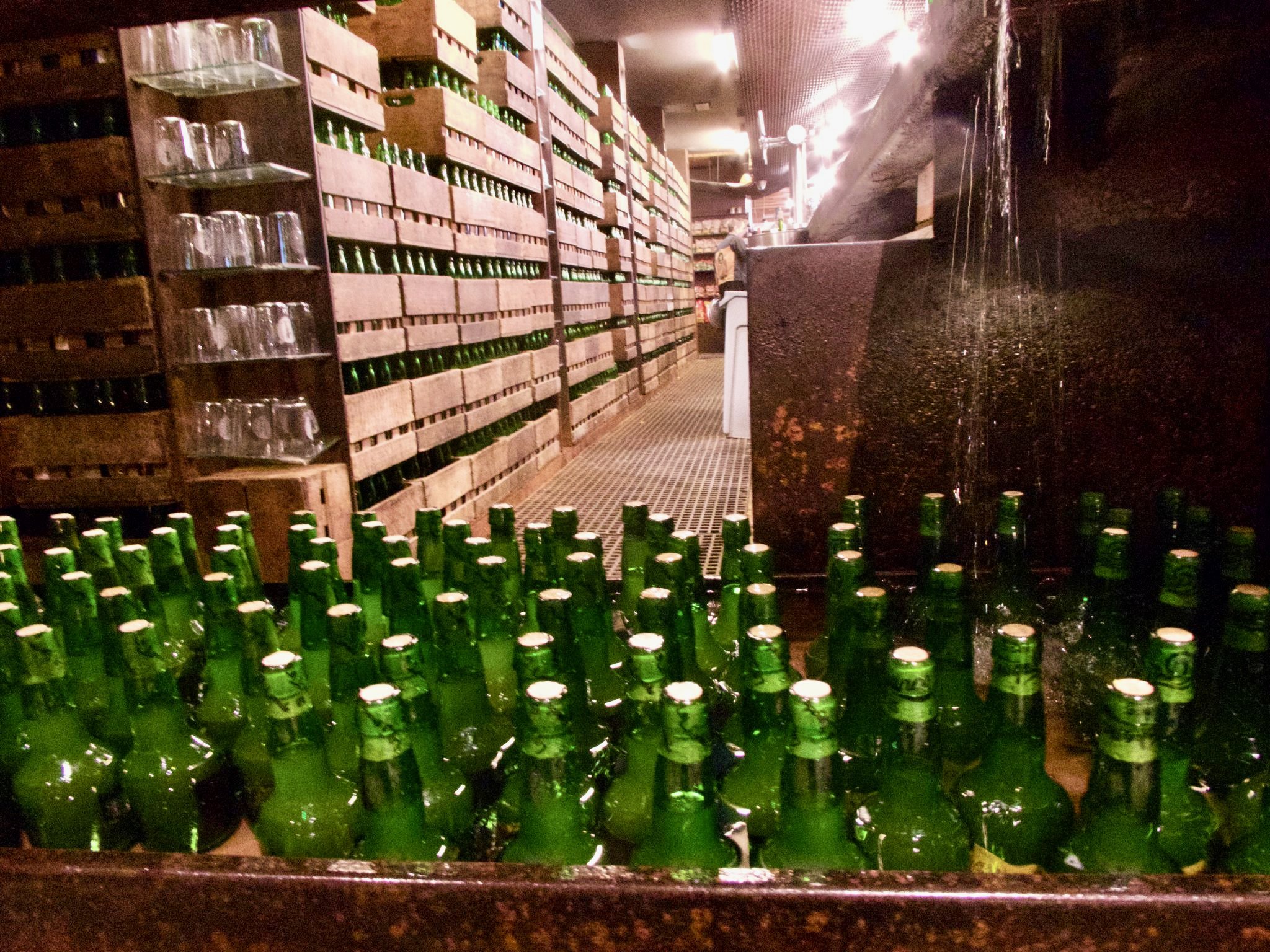Cider and stews - Asturian hospitality
This is the first of The Bikepacking Chapters as I cycle across Spain with my partner.
Rolling through the industrial suburbs of Avilés the tarmac pitted from years of lorry use, and blocks of rectangular flats flanking our arrival, I wasn't anticipating a meal to write home about.
How wrong I was.
The fields between Aviles and Piesca, our route for the day, dropped away from the road, curved metal barriers preventing our tipping off of our bikes through apple orchards towards the sea. The trees, on a level with our hill climbs, were heavy with fruit. They are the first clue as to the bedrock that cider holds in the region.
The second clue is that Sidrería, bars that specialise in cider and typical Asturian (a region of northern Spain) food, are common in towns of the region. Our stomachs, not yet accustomed to the later Spanish dinner time, and ravenous after our longest days ride yet, a Sidrería was exactly what was on order.
If you think that there are politics around the pouring a Guinness, then get to Asturia and chat to a Master Escanciador. In charge of passing on the knowledge of the skilled art of pouring this appley goodness, they hold the keys to this bedrock of Asturian drinking and gastronomic culture.
There is a cider-routine that they have honed and you become a part of by visiting a Sidrería. We had already somewhat booked up on this in an article from The Driftwood Journals but I'll try and explain some of the experience here.
Firstly, cider has to shared, never ordered for yourself. The waiter brings over the bottle, which has been kept cool, in this instance at least, in a large rectangular bath-like container which is kept constantly chilled with running water.
Secondly, the cork is taken out of the bottle, and holding the bottle as high as possible, and the glass at hip height, the cider is poured. The finesse comes as the glass is titled back and forth, and the escanciador looks straight on, past the stream of cider. There is a flare to the carbonation of the fresh cider.
Thirdly, the woman (that's me!) gets her glass back first and, best drunk straight away, we knock it back in one. The bottle is replaced on the table, the cork back pressed back in, and the next tables served.
The escanciador will then return as and when they can, serving the next round in the same manner, until there is an inch of cider remaining in the bottle. This is left, and a fresh bottle retrieved if wanted. There's no consensus that I could find about this last bit of cider. Perhaps to avoid the sediment, maybe a Celtic tradition of returning to the earth a part of what has been given to you ,perhaps reminiscent of a pre-pandemic tradition of sharing the same glass and leaving a little for the next person to swill out before their share is poured.
By the time we got to this point though, we were ravenous. And that was lucky as we were about to learn that in Asturia, like for their cider, meals are for sharing.
We decided on two dishes - an Asturian staple, fabada, and a cantabrian dish, often served in this region, merluza a la sidra.
When the fabada arrived with a ladle, we knew we were in for a Big Eat. Beans stewed in a tomato sauce made richer with 3 different types of sausage and a good chunk of pancetta, served with what can only be described a thirded loaf helped to very quickly keep the hunger wolf at bay.
Fabada served with a ladle
Ladling spoonfuls of fabada between our bowls, combined with the attentive ecanciadors, helped to make what could have been a formal eating out experience, into a space that felt built for friends and family. The informal nature and importance of food shared in the home translated into the business of the hospitality industry. Where there is a ladle and an ecanciador, though, the hospitality wins out.
Just as we were fit to burst, out came the merluza a la sidra. Thick cut pieces of local hake cooked in a cider and tomato sauce with mussels, potato, eggs, and asparagus. Somehow, we devoured the lot.
Unsurprisingly, the next day quickly turned into a rest day as we traverse the camino route between Santander and Santiago. It's a meal that we may well now help us roll down the next hills to come, but will serve as a reminder of hearty Asturian hospitality and cuisine.
Merluza a la sidra




